- No products in the cart.
Mini-Titrator for Measuring Titratable Acidity in Wine
Mini-Titrator for Measuring Titratable Acidity in Wine
The HI84502 is a simple, fast, and affordable automatic mini titrator designed for testing total acidity levels in wine. Based on an acid-base titration method, this mini titrator uses an optimized preprogrammed method of analysis with a powerful algorithm that determines the completion of the titration reaction by the use of a specialized wine pH electrode.
Analysis for titratable acidity with the HI84502 is not selective for acids of similar strength. In this method, a base of known concentration is used to understand the overall acid content of a sample and express it as the main acid present in wine, tartaric acid.
The HI84502 incorporates a precision piston style dosing pump that adjusts the volume of dosing dynamically based on the voltage changed. This dosing system reduces the amount of time required for the titration while providing for a highly accurate determination of the amount of titrant used.
This mini titrator is supplied complete with all the materials necessary to perform low and high range measurements of total acidity. All chemicals are premixed and prepackaged including standardized titrants, reagents and pump calibration solution. There is no need for volumetric glassware or analytical balances.
- Piston driven pump for accurate dynamic dosing
- Complete with pH electrode with CPS™ Technology
- Pre-standardized titrant and pre-measured reagents
Mini-Titrator for Measuring Titratable Acidity in Wine
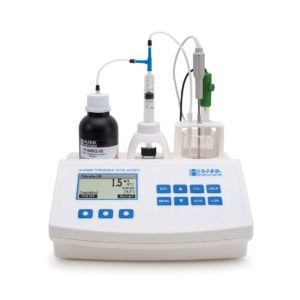
Acids occur naturally as grapes grow and during the eventual fermentation process. Wines have lower levels of acid when there is a hot growing season or when the grapes come from warmer regions. In the proper proportion, acids are a desirable trait, giving the wine a distinct character. The three predominant acids in wine are tartaric, malic and citric. Tartaric acid is the principal acid in grapes and is a component that promotes a crisp flavor and graceful aging in wine. A moderate amount of a wine’s acid comes from malic acid, which contributes to fruitiness. A small amount of titratable acidity comes from citric acid. Wine also contains trace amounts of other acids; the least desirable acid in wine is acetic acid, which, when present in more than a nominal amount, gives wine a sour or vinegary aspect.
Total acidity, also called titratable acidity, is the sum of the fixed and volatile acids. In the United States, the total acidity is usually expressed in terms of tartaric acid, even though other acids are also measured. Total acidity directly affects the color and flavor of wine and, depending on the style of the wine, is sought in a perfect balance with the sweet and bitter sensations of other components. Too much acidity makes wine tart and sharp; too little makes wines flat and uninteresting. Proper acidity in wine is what makes it refreshing and an ideal accompaniment to food. The proper acid level of a wine varies, with sweeter wines generally requiring somewhat higher levels to retain the proper balance.
Application-Specific pH Electrode
The HI84502 is supplied with the HI1048B glass body pH electrode featuring CPS™technology to prevent the clogging of the reference junction. Conventional electrodes may clog quickly in biological samples that have a high solids content such as wine must. By design, the HI1048B pH electrode utilizes a polytetrafluoroethylene (PTFE) sleeve junction which controls a steady, predictable flow of electrolyte solution, keeping the junction open. The hydrophobic properties of PTFE repel wetness and coatings.
Piston Driven Dosing Pump
The heart of the HI84502 is the piston driven burette pump. This type of dosing system uses a motor in which each dose is very precisely controlled and the volume dispensed is accurately determined. The piston driven burette is controlled dynamically so that the volume of titrant being dosed is automatically adjusted based on a voltage response of the previous dose. This type of dosing speeds up the titration process by allowing for more titrant to be dosed at the start of the titration and then very small doses as the endpoint is reached.
Automatic Stirrer
The built-in stirrer is automatically maintained at a speed of 600 rpm, regardless of the viscosity of the solution being titrated.
Characteristics:
| Range | Low Range: 0.1 to 5.0 g/L of tartaric acid; High Range: 4.0 to 25.0 g/L of tartaric acid |
| Resolution | 0.1 g/L (ppt) |
| Accuracy (@25ºC/77ºF) | 3% of reading or ±0.1 g/L, whichever is greater |
| ample Volume | Low Range: 10 mL; High Range: 2 mL |
| Methods | acid base titration |
| Principle | endpoint titration: 7.00 pH or 8.20 pH |
| Pump Speed | 10 mL/min |
| Temperature Range | -20.0 to 120.0°C; -4.0 to 248.0°F; 253.2 to 393.2 K |
| Weight | 235 x 200 x 150 mm (9.2 x 7.9 x 5.9”) |
| Warranty | meter 2 years, probe 6 months |

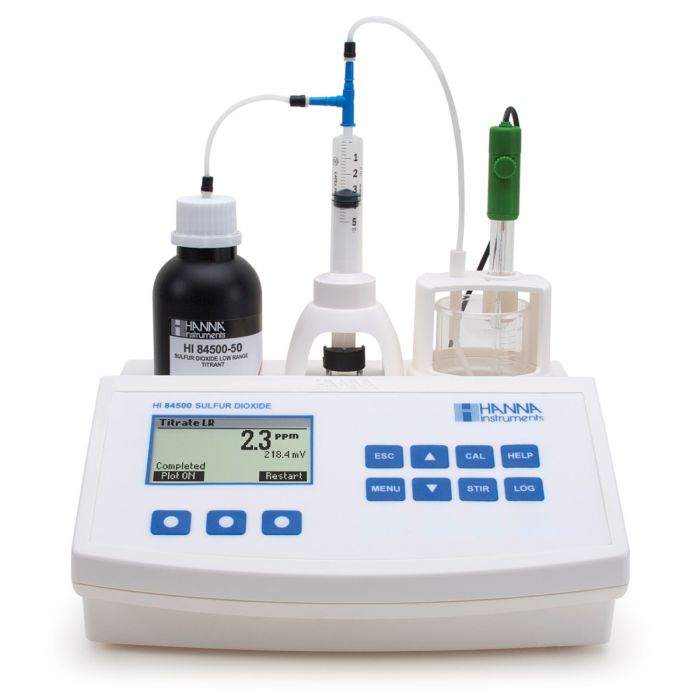

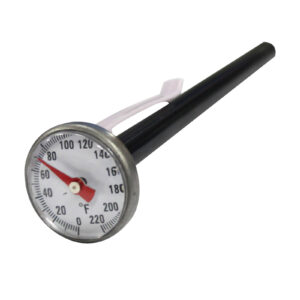
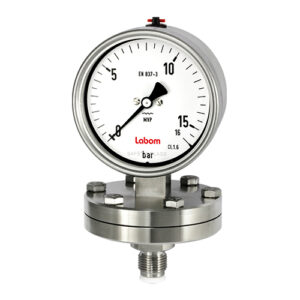
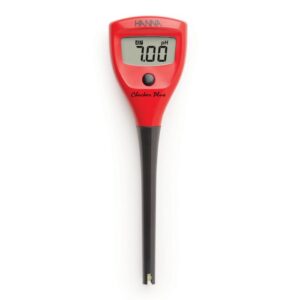
Reviews
There are no reviews yet.